Green grams
Commonly known as Ndengu. A major food and income generation crop in semi-arid lands. A major income generating agro-enterprise ranking second after indigenous chicken in the Arid and Semi-Arid Lands of Kenya. The bulk of mungbean cultivation is largely carried out by smallholder farmers under rain-fed conditions and 90% of the production is concentrated in the drier areas of eastern Kenya. It can also be mashed with irish potato, sweet potato, banana, arrow roots and pumpkins to make mukimo.
Karembo
- Early maturity (65-75 days) compared to the local that mature in 90 days.
- Potential yield range from 1500 – 1800 kg/ha .
- Large pod size making their harvesting easier.
- Large grain size (8-10g/100 seeds).
- Grain has shiny green in colour.
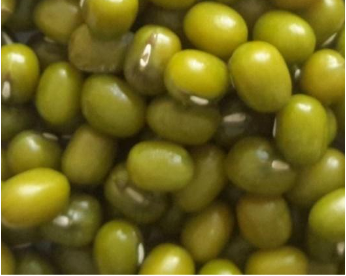
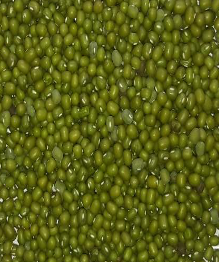
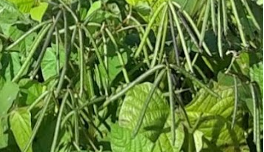
- Maturity duration is 80-90 days.
- Potential yield: 1000 -1500kg/ha.
- Medium seed size: 4-5g/100 seeds.
- Heavy grain weight.
- Tolerant to major green gram diseases.
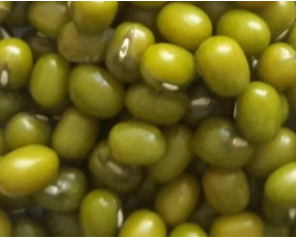
- Early maturity (65-75 days) compared to the local that mature in 90 days.
- Potential yield range from 1500 – 1800 kg/ha.
- Large pod size making their harvesting easier.
- Large grain size (8-10g/100 seeds).
- Grain has shiny green in colour.
Biashara
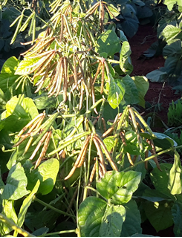
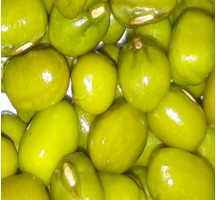
- Maturity (65-75 days) compared to the local germplasm that mature in 90 days.
- Potential yield range 1500 – 1800 kg/ha.
- Large pod size making their harvesting easier.
- Large grain size (8-10 g/100 seeds.
Ndengu Tosha
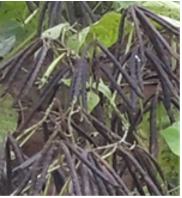
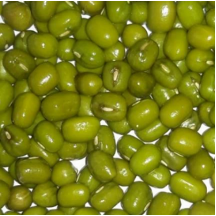
- Maturity (60-70 days) compared to the local germplasm that mature in 90 days.
- Potential yield range 1500 - 1800 kg/ha.
- Large pod size making their harvesting easier.
- Large grain size (6-7 g/100 seeds).
Kat N26
- A fairly early maturing variety (matures in 80-90 days).
- Has potential yields of 1000-1500kg/ha (4-6, 90 kg bags/acre).
- Has a determinate growth habit, is tolerant to aphids, resistant to yellow mosaic and moderately resistant to powdery mildew.
- Suited to both semi-arid and well-watered areas of between 50-1600m above sea level.
- Dry pods are black in colour. 85% of the grains are shiny green and bold hence some farmers call it nylon.
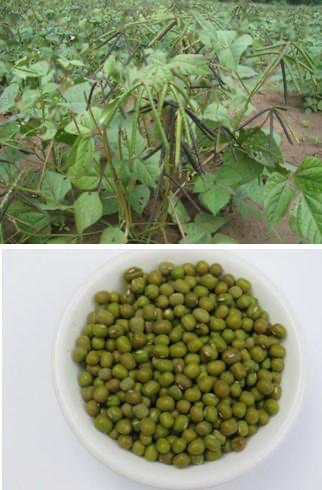
KS20
- Is a green gram variety that matures in 80-90 days.
- Has a potential yield of 1600 - 2200 kg/ha (7-9, 90 kg bags/acre).
- Its characteristic features include large seed size (6-7g/100 seeds), dull green grains and pods that turn brown when dry.
- It is tolerant to aphids, resistant to yellow mosaic virus and moderately resistant to powdery mildew. Grains are dull green in color.
- Seeds are non-stony.
- Justification KS 20 is high yielding, large seeded and non stony and will increase production and household livelihoods in the ASALs.

KAT N22
- This green gram variety is tolerant to aphids, resistant to yellow mosaic virus and moderately resistant to powdery mildew.
- It matures in 80-90 days and has a potential yield of 1000-1300kg/ha (4-5, 90 kg bags/acre).
- Pods are yellow in colour when dry.
- Grains are golden yellow in colour and preferred for stews.
- Yellow gram is can fit into cropping patterns practiced in ASALs (two season cropping).
- The variety is suitable for improving household nutrition, income generation and resilience to climate change in the ASALs.
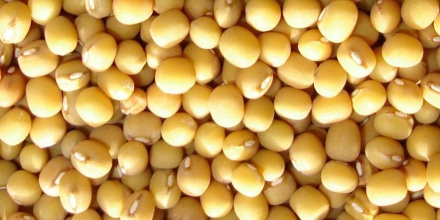
- Green gram grow best at an altitude of 0-1600 m above sea level.
- Temperature range of 28 to 30°C.
- Heavy rainfall results in increased vegetative growth with reduced pod setting and development of diseases like athracnose and bacterial blight.
- They are well adapted to red sandy loam soils.
- Green gram are not tolerant to wet, poorly drained soils.
- Green gram is sensitive to waterlogging and high salinity.
- Poor tolerance to wet soils/wet conditions.
- Land should be ploughed during the dry season.
- Contour bed or ridge and furrow system are useful in preventing water-logging by draining excess surface water and preventing soil erosion.
- With the use of a riper, planting is possible even on unploughed land where minimum tillage, popular with the Conservation Agriculture (CA) is practiced. Thereafter shallow weeding using hand hoe or herbicides to minimize tillage is recommended.
- Use of certified seeds is highly recommended as it reduces spread of seed borne diseases
- The recommended spacing under is 50 cm by 10 cm.
- Under conservation agriculture the spacing is reduced to 45 cm by 15 cm.
- Use of organic fertilizer.
- Fits in major cropping systems - mono and inter-crop.
- Intercropping and rotations aiming at optimizing use efficiency of the applied nutrients and improving crop productivity.
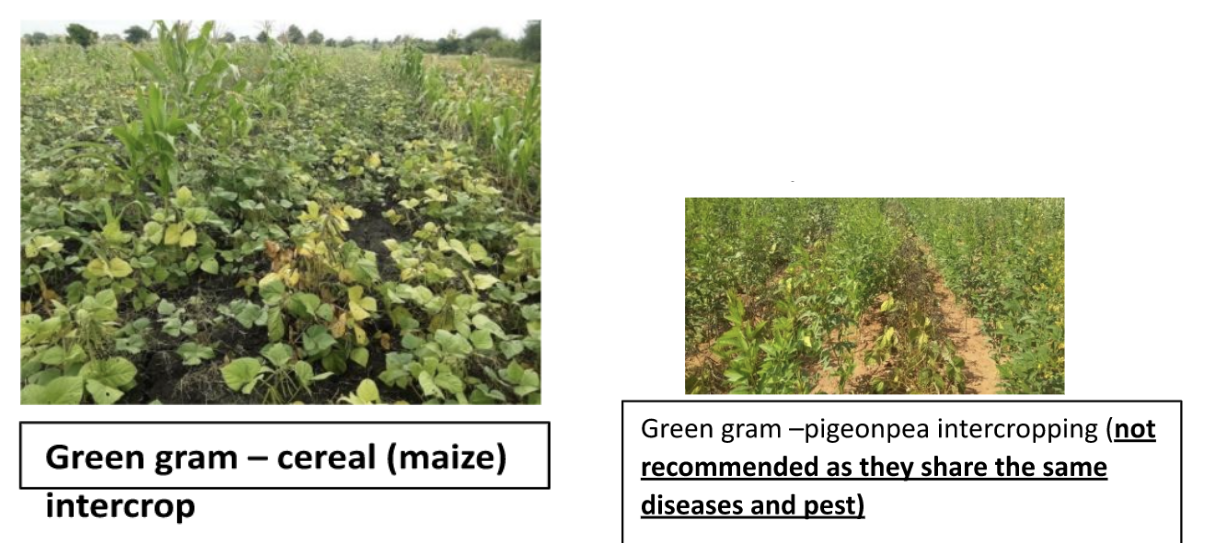
Soil analysis
- Should be done before fertilizer application.
- Use of organic fertilizer (manure) is encouraged for balanced soil nutrients and improved soil structure.
- Basal application of fertilizers like DAP during planting is recommended where soils are poor.
Top dressing is NOT recommended
Since high availability of nutrients fertility make the crop too vegetative and thus compromise the grain yield.
Weeding
- The most common weeding method is use oxen-drawn plough to remove early weeds followed by hand weeding.
- Second weeding should be done before flowering to avoid flower falling due to shaking the plants, which would reduce the yield.
- When weeding ensure earthing is done to ensure covering of the root system. This prevents overheating as well as improve anchorage and therefore prevent lodging.
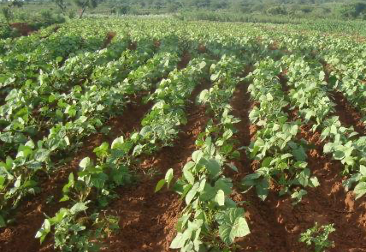
Major diseases include: Bacterial blight, bean athracnose, Mungbean Yellow Mosaic Virus, root rots, Cercopsora Leaf Spot, Rust.
Common Bacterial Blight (CBB)
- its Seed borne
- It’s favored by warm temp (280c) and high humidity.
- Mode of spread is through wind, water, insects, farm implements
- Spread to leaves via wound
- Causes staining and browning of the grain
Management
- Use tolerant varieties
- Use of recommended fungicides
- Use certified/clean seeds
- Maintain field hygiene by removing crop residue, uproot diseased plants to prevent further spread
- Crop rotation
- Deep ploughing to destroy plant remains
Common Bacterial Blight (CBB)
- its Seed borne
- It’s favored by warm temp (280c) and high humidity.
- Mode of spread is through wind, water, insects, farm implements
- Spread to leaves via wound
- Causes staining and browning of the grain
Management
- Use tolerant varieties
- Use of recommended fungicides
- Use certified/clean seeds
- Maintain field hygiene by removing crop residue, uproot diseased plants to prevent further spread
- Crop rotation
- Deep ploughing to destroy plant remains
Bean Anthracnose
- Seed infection is a major source of anthracnose transmission to the next generation
- The disease attacks both the stem, pod and seed
- Cultural practice by removing the debries
- Do not harvest seed from infected plants
- Ensure adequate spacing to promote foliar drying
- Weed control to promote proper air circulation and decrease moisture in the foliar canopy
- Avoid over irrigation since it wets and liberate fungal spore mass on foliage
- Biological control by seed dressing with Tricoderma varied
- Chemical control
- Integrated disease management
Mungbean Yellow Mosaic Virus

- Viral disease spread by White flies
- Scattered yellow spots on the leaves.
- Infected plants produce fewer flowers and pods: pods tend to be small
Management
- Control whiteflies
- Use tolerant varieties
- Diseased plants should be rogued out to prevent further spread of the disease.
- Crop rotation
- Major pests: aphids, cutworms, whiteflies, leaf miners, pod sucking bugs, pod fly, pod borers, red spiter mites, scales, caterpillars, thrips, and bruchid at storage.
Aphids and management
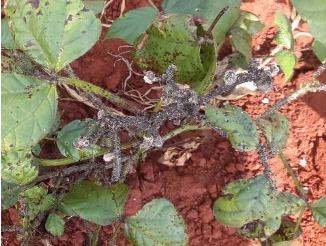
- Yield losses: 31-75%
- Severe infestation results in premature defoliation, and shedding of flowers and pods
- Use recommended insecticides
- Alternate insecticides to avoid pest resistance
- Avoid late planting
- Improve soil fertility by enriching the soil through the use of manure and compost - increases both crop vigor and resistance to pests.
NB: pests and diseases mostly attack the weak malnourished plants
Common Mosaic Virus
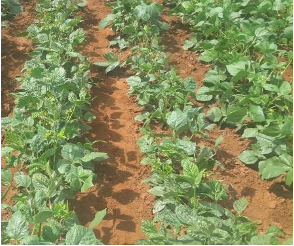
- Viral disease spread through infected seed and aphids
- Cause yield loss of up to 90%
- Favored by temperature range 20-25oc
Management
- Control aphids
- Crop rotation
- Harvesting is done by plucking dry pods.
- The plucked dry pods are sun-dried for 3 to 5 days, then threshed by either beating with a stick or using a thresher.
- Immature harvesting may lead to poor grain quality and chances of infestation during storage.
- Delay in harvesting leads to shattering of pods and sprouting of grain in case of rain.
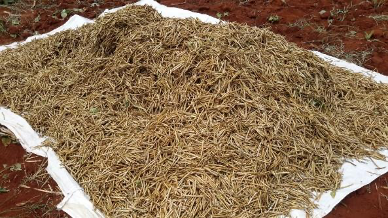
- The grain should be dried to a Moisture Content (MC) of 12%. High MC lead to growth of mould thus fungal infection.
- Proper drying of grain is very important to prevent the growth of fungi and contamination with aflatoxins.
- Threshed seed is cleaned, sorted to remove all the damaged grain.
- The grain is treated and stored in bags.
- Formation of Community Based Organisation (CBOs) for collective marketing
- Formation of Common Interest Groups (CIGs) for collective marketing
- Karimi, R., Mutisya, D.L, Bett C. and Nungo R. (2018). Green gram Production Guide. KALRO Katumani
- Early Maturing, large seeded Green gram variety Ndengu Tosha for improved food security and income generation. 2017.
- Early Maturing, large seeded Green gram variety Biashara for improved food security and income generation. 2017.
- Early Maturing, large seeded Green gram variety Karembo for improved food security and income generation. 2017.
KENYA AGRICULTURAL AND LIVESTOCK RESEARCH ORGANISATION
P.O. BOX 57811-00200,
NAIROBI, KENYA.
CALL: 0111010100
Institute Director, KALRO-Katumani
P.O. Box 340-90100
Machakos
Email: director.amri@kalro.org
Authors: Rael Karimi (rkalri213@gmail.com; Rael. Karimi@kalro.org)